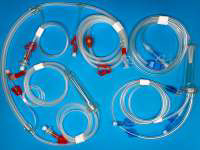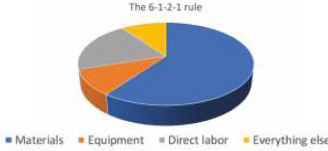|
Fast Facts
Plastic Based Medical Disposables For Dialysis
1. Analysts expect the global dialysis equipment
market size at US$ 17.87 billion in 2022, expecting to
go to US $ 23.63 billion by 2028, at a CAGR of 4.8
percent.
2. In a Rs. 4500 crore Indian Market, it is estimated
that only 20 percent of the 20 million patients with
chronic kidney disease get dialysis treatment. (medicalbuyer.co.in)

3. Indian Dialysis market is projected to grow from
$2.113 Bn in 2022 to $ 4.368 Bn by 2030 = @ CAGR 9.5%.
(insights.com)
4. The use of disposable dialysis devices, largely
made from plastics, increases patient safety and, as a
result, reduces any serious risks during the dialysis
process.
5. The products include dialysis catheters, urethral
catheters, dialysis drainage bags, dialysis care kits,
and dialysis fistula needles etc.
6. One of the major components is Blood Tubing Sets
(disposable bloodlines), intended to transfer blood
from patients’ vascular access system to the hemodialyzer through an arterial tubing, and from the
hemodialyzer to the patient vascular system via a
venous tubing.
The Real Economics Of Extrusion.

Equipment is a minor expense compared with materials,
as articulated in the 6-1-2-1 rule of cost
distribution: 60% materials, 10% equipment, 20% direct
labor and 10%
everything else, including power, packaging and
insurance.
• Extrusion is usually a 24-hour continuous operation.
You can run 24/7 or 24/5 or even 24/4, but if you
don’t run around the clock you are idling equipment,
paying for frequent starts and stops and, therefore,
greatly increasing production costs. There are a few
specialty applications where you can get away with
this, but the product has to be worth a lot, like
multi-lumen medical catheters. For the rest of us, if
we don’t run around the clock, our competitors will.
• Equipment is a minor component of manufacturing
cost. Keep it running and look at the cost as a charge
per pound or kilogram of resin, not machine-hours, as
is sometimes used in molding.
• The largest cost by far is the material. With some
resins—notably, but not exclusively, PVC—the selection
and amount of additives and blend components are very
important, and may control the whole economic
proposition.
• If material is the big factor, what else is there?
Here is where the 6-1-2-1 rule comes in: 60%
materials, 10% equipment cost, 20% direct labor and
10% everything else, including power, packaging and
insurance.
A different kind of pie chart illustrating the 6-1-2-1
rule, courtesy Allan Griff.
https://www.plasticstoday.com/extrusion-pipe-profile/realeconomics-extrusion |
